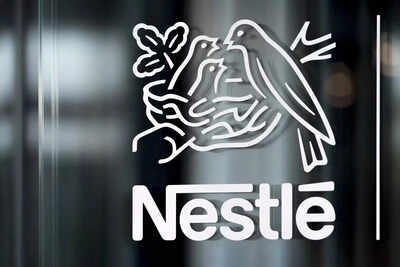Suresh Narayanan steps down after leading Nestlé India’s revival and expansion

Suresh Narayanan, who steered Nestlé India through the most challenging “existential” Maggi crisis, will retire on July 31 after a decade at the helm—a satisfied man. That sense of satisfaction stems from leaving the packaged food major in significantly better shape, with revenue growing at 10 per cent CAGR, profit after tax rising nearly six times, and market capitalisation increasing almost fourfold over the past 10 years.Appointed as CMD in 2015, Narayanan is widely credited with resurrecting Maggi—the company’s flagship brand—after it was pulled off kitchen shelves due to a regulatory ban. During his tenure, he fired the company’s innovation engine with a diversified and future-ready portfolio, rejuvenating it by launching over 150 new products—which now contribute about 7 per cent of sales—and delivering consistent growth, even amid post-COVID volatility in the FMCG sector, stubborn commodity inflation, and a consumption slowdown.“I am happy to leave behind a culture of respect, courtesy, dignity, and trust, which is all-pervasive, has helped us through good times and bad, and the extent of diversity we’ve been able to provide. It is the strength of teams, brands, and conviction that has made us stand up to the odds and deliver 10 years of consistent performance. We were once seen as an urban company with a limited portfolio, but through a penetration-led volume growth strategy rolled out in 2015, we now have access to more households and more consumption occasions,” Narayanan told TOI in an exit interview.Following the setback, Maggi recovered 60 per cent of its market share within months of its relaunch in November 2015, bouncing back from near-extinction and reaffirming its place in Indian kitchens, eventually making India its largest market globally. “Post the crisis, our levels of respect and trust have gone up. We came back from a dead brand into life. We moved from strength to strength,” he recounted.Over the years, Nestlé has delivered steady growth by focusing on premiumisation, a consumer cluster-based and ‘Rurban’ strategy, and expansion into new businesses—driving both top-line and bottom-line performance. “One of the things I feel satisfied about is that there were two or three businesses I was keen to start in India. One was the breakfast cereals business, then pet care business and the third was Nespresso—all are now here,” Narayanan said.Also, “we wanted to grow health science, and the joint venture with Dr Reddy’s has given us that opportunity. So we are well placed not just in our core, but also in new, emerging opportunities—where there is a lot of potential for growth,” he added. Narayanan began his career at Nestlé India in 1999 as executive VP (sales), playing a key role in expanding the company’s strategic footprint, and over the years, leading strategic transformations across core functions and major geographies.“We have come a long way from those difficult (Maggi) days, and it feels good to give shareholders a bonus issue (upon farewell),” he added. Investor expectations, too, have been well met, with Narayanan delivering on three key demands: better returns, a 1:10 share split last year, and the company’s first-ever 1:1 bonus issue this year.As he prepares to step down after 26 years with Nestlé, passing the baton to Manish Tiwary—former Country Manager of Amazon India—who takes over as CMD from August 1, the FMCG landscape is showing encouraging signs of recovery. Green shoots are becoming visible in urban demand after months of slowdown, supported by easing inflation and recent fiscal and monetary policy measures. Rurban markets (semi-urban and rural) have also demonstrated positive momentum, contributing to overall market resilience.This is a positive sign for companies like Nestlé, where urban markets remain key growth drivers, he said. At the same time, the value segment is seeing traction, supported by more benign inflation, a better monsoon, improved incomes—all contributing to a more favourable environment for consumption-led growth, he added.Amid these evolving market dynamics, the lens of sustainability remains ever-present in the company’s business strategy, particularly in light of two significant challenges, according to him. First, consumers are increasingly demanding higher standards of governance and sustainability in the brands and products they choose—a global shift reflecting rising consumer consciousness. Second, regulatory bodies worldwide are raising the bar for product specifications, requiring companies to ‘walk the talk’ by enhancing the quality of their offerings to meet both consumer expectations and stricter regulatory standards. A rising tide lifts all boats. In the interconnectedness between consumer demands and regulatory responses lies the necessity for businesses to adapt and evolve in this changing landscape,” Narayanan says. Responding to a question on the company’s strategy of steering clear of mergers and acquisitions, he said, “We continue to explore good opportunities. But again, the question is one of valuation, potential, synergies, and growth opportunities that we see.”Using his experience at Nestlé, he now wants to guide senior executives on the pillars of strategy, leadership, and crisis management—all of which he honed during his time at the company. These, he believes, are increasingly essential in a world where crises are no longer exceptions but part of the norm.






